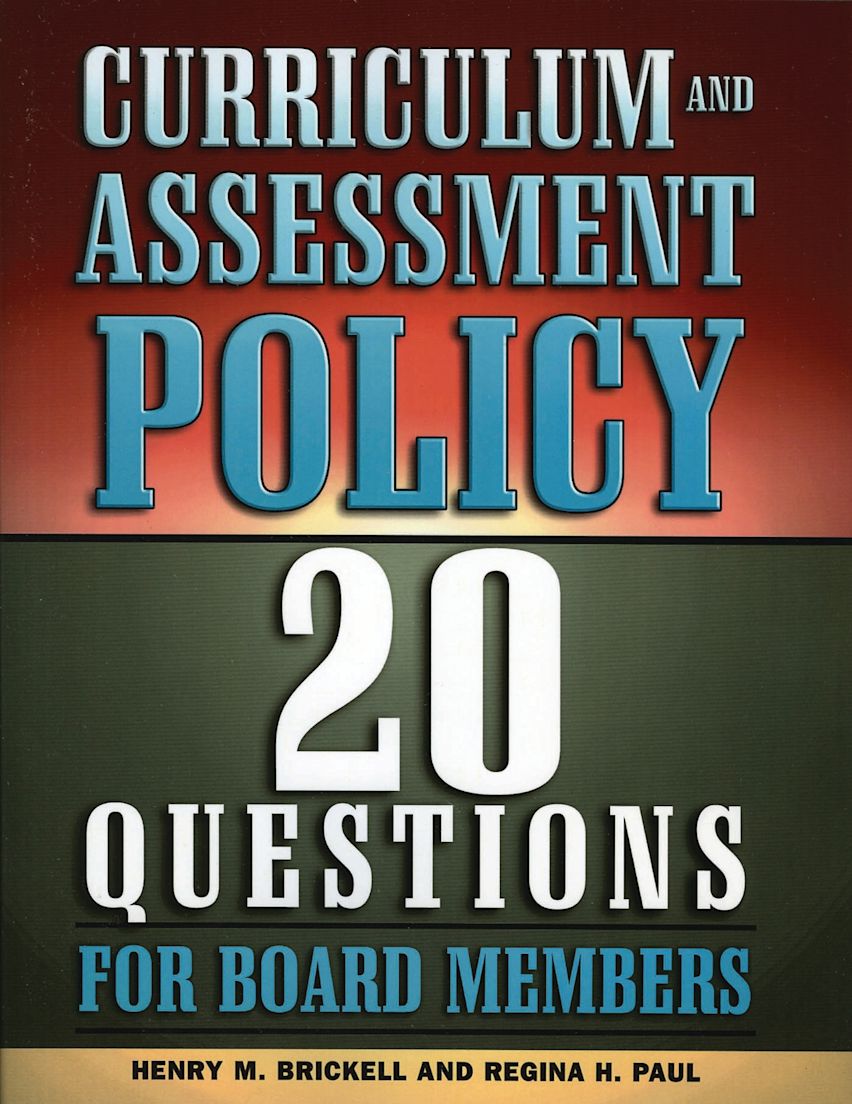- Home
- ACADEMIC
- Education
- Leadership and Management
- Curriculum and Assessment Policy
Curriculum and Assessment Policy
20 Questions for Board Members
Curriculum and Assessment Policy
20 Questions for Board Members
This product is usually dispatched within 3 days
- Delivery and returns info
-
Free CA delivery on orders $40 or over
You must sign in to add this item to your wishlist. Please sign in or create an account
Description
Most school boards delegate curriculum and assessment to school administrators, which in effect, lowers standards and leads to aggressive intervention by policy makers at the state and federal levels. This book is designed to stimulate and assist local boards in the proper exercise of their legal authority over curriculum and assessment. It discusses why non-educators should govern the core of every school by determining what is to be learned and whether it is being learned, and how the work of the board can be divided from the work of the superintendent on such matters. Features: A graphic essay dividing the governing responsibilities of a board of education from the administrative responsibilities of the superintendent, 20 key policy questions that every board should answer, Alternate policy positions a board might consider adopting with alternative positions supported by appropriate arguments, Samples of actual policies adopted by boards to govern curriculum and illustrate the level of detail and the writing style boards might want to use for its own policies. This book will assist school board members, superintendents, curriculum directors and specialists, and testing directors, raise standards for learning in local schools.
Table of Contents
Part 2 The Policy Clock
Chapter 3 Overview of the Policy Clock
Chapter 4 12 O'Clock-Goals and Objectives
Chapter 5 2 O'Clock-Policies
Chapter 6 4 O'Clock-Regulations
Chapter 7 6 O'Clock-Operations Documents
Chapter 8 8 O'Clock-Process Reports with Standards
Chapter 9 10 O'Clock-Product Reports with Standards
Part 10 How To Use the Discussion Guides
Chapter 11 Issue 1: The Board's Point of Entry
Chapter 12 Issue 2: The Curriculum Revision Schedule
Chapter 13 Issue 3: An Obligation or Option for Teachers
Chapter 14 Issue 4: State Curriculum Standards as a Source of Curriculum Objectives
Chapter 15 Issue 5: Other Sources of Curriculum Objectives
Chapter 16 Issue 6: Difficulty of the Objectives
Chapter 17 Issue 7: Affective Objectives
Chapter 18 Issue 8: Teaching Schedule for the Objectives
Chapter 19 Issue 9: Guiding Instruction
Chapter 20 Issue 10: Communication to Parents
Chapter 21 Issue 11: National, State, and District Tests
Chapter 22 Issue 12: The Amount of Testing Time
Chapter 23 Issue 13: Types of Assessments for Measuring and Judging Learning
Chapter 24 Issue 14: Types of Questions in Traditional Paper-and-Pencil District Tests
Chapter 25 Issue 15: Test "Forms" and Test Question "Pools"
Chapter 26 Issue 16: Board Inspection of Actual Tests
Chapter 27 Issue 17: Frequency of Measurement
Chapter 28 Issue 18: Sampling Students
Chapter 29 Issue 19: Setting Standards
Chapter 30 Issue 20: Analyses, Interpretaions, and Recommendations Accompanying Test Results
Part 31 Sample Documents for Board Members
Product details
| Published | Jan 31 2005 |
|---|---|
| Format | Paperback |
| Edition | 1st |
| Extent | 94 |
| ISBN | 9781578862092 |
| Imprint | R&L Education |
| Dimensions | 278 x 216 mm |
| Series | Leading Systemic School Improvement |
| Publisher | Bloomsbury Publishing |
About the contributors
Reviews
-
...a welcome tool for boards and superintendents who wish to improve and strengthen their respective roles and responsibilities.
Gene Spanneut, Ed.D., assistant professor, State University of New York, College at Brockport


































